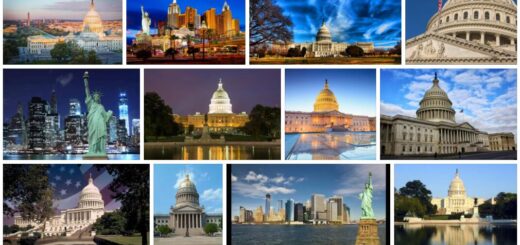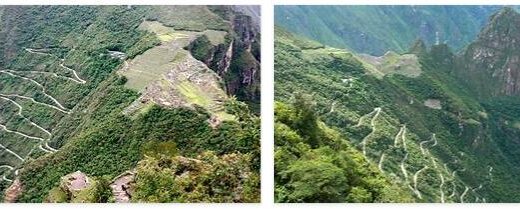Salinas and Quito, Ecuador
SALINAS
One of the best beach resorts in Ecuador, Salinas is located on the Pacific coast, 2.5 hours drive from Guayaquil. It is here that the most popular and luxurious hotels of Ecuador, apartments owned by wealthy Ecuadorians and foreigners, shops are located.
The main beach of Salinas is characterized by the most developed entertainment infrastructure. Here you can book a whale watching excursion (the best time is from June to September), a trip on a luxury yacht with a professional guide, rent scooters, water skis, go fishing.
The main beach of Salinas gradually turns into Chipipe beach, already located in the residential and commercial area of the city. Chipipe is characterized by stronger waves suitable for bodyboarding. Here is the yacht club of the resort. In the vicinity of Salinas, a variety of ecological excursions are organized: cocoa plantations, local haciendas, thermal mud baths (San Vicente baths are located 25 minutes drive from the resort). Off the coast is the island of Isla de la Plata, which is part of the Machalilla National Park with its seabird sanctuary.
Climate
From January to April – the best time to relax in the resort: sunny and dry weather sets in here.
| SALINAS | Jan | Feb | Mar | Apr | May | June | July | Aug | Sep | Oct | Nov | Dec |
| Pace. air, C | 27 | 27 | 27 | 27 | 26 | 25 | 24 | 24 | 25 | 25 | 25 | 26 |
| Pace. water, C | 24 | 26 | 25 | 24 | 24 | 23 | 22 | 21 | 21 | 22 | 22 | 23 |
| Precipitation, mm | 230 | 242 | 252 | 153 | 60 | 33 | 10 | 1 | 2 | 3 | 6 | 34 |
QUITO
The capital of Ecuador is considered one of the most beautiful cities in South America. Quito is located at an altitude of 2850 m above sea level and only 22 km south of the equator, which provides it with a very pleasant climate and breathtaking panoramas of mountain ranges with snowy peaks visible from anywhere in the city. From the west, the city is surrounded by the steep walls of the Pichincha volcanic massif, the main volcano of the same name periodically throws ash clouds into the sky over Quito, and in the east direction, the streets of the city run rather steeply to a wide valley, known as Valle de Los Chillos, gradually descending to the pool Amazons.
The old city attracts with a large number of chapels, churches and monasteries, beckons with narrow streets and low colonial buildings made of stone and adobe. Quito can rightly be called a city of churches. There are more than eighty of them here. The new city grew after 1940, when the urban elite left the mansions of the old city and began to move north. Its center is traditionally considered the area of La Mariscal. Here lay the streets of Patria, Orellana, 12 October Street and the main commercial artery of the city – Avenida Amazonas. Externally, the La Mariscal area is a mixture of colonial style, luxury expensive villas and modern block buildings. Banks, offices, supermarkets, boutiques, souvenir shops and the best hotels of the city are located here.
To the north of the colonial center, between the old and the new city, there is La Alameda Park with a statue of Simon Bolivar, a picturesque lake, an astronomical observatory and a museum. Not far from here is El Ejido Park – a favorite place for the townspeople to relax. On Saturdays and Sundays, vernissages are organized here, where artists sell their paintings, and on weekdays you can just watch their creative work.
View:
Street of the Seven Crosses – the oldest street in the city with numerous churches.
The Church of San Francisco (Iglesia de San Francisco) is an ancient temple (1536) and the largest architectural monument built by the Spaniards in South America.
The Church of La Compaña de Jesus is Quito’s most beautiful Baroque temple. The construction was started at the beginning of the 17th century by the Jesuit Order, completed in the second half of the 18th century.
Cultural and educational center of Ecuador (Casa de la Cultura Ecuatoriana) – various exhibitions, theatrical performances, film screenings, etc.
Museum of Colonial Art – founded in 1926. Painting, sculpture, interior items of the colonial period.
Museum of Archeology and Ethnography – the exposition includes a rich collection of works of art from the pre-Columbian era.
La Ronda is an old street with well-preserved colonial architecture.
La Crolina Botanical Park – a collection of exotic plants from South America.
Climate
Average monthly temperatures in summer in Quito range from +18 to +25 C, in winter – from -3 to +13 C. Precipitation is about 600 mm. per year, with a noticeable decrease in levels between August and February.
| QUITO | Jan | Feb | Mar | Apr | May | June | July | Aug | Sep | Oct | noc | Dec |
| Pace. air, C | 14 | 14 | 14 | 14 | 15 | 15 | 15 | 15 | 15 | 14 | 14 | 14 |
| Precipitation, mm | 74 | 114 | 127 | 150 | 98 | 37 | 26 | 32 | 79 | 115 | 79 | 83 |



